This ultimate LMS guide will not only fill in all the blanks, but also help you find the best solution for your business. Enjoy reading.
Part 1. LMS from A to Z
After reading this part, you’ll finally get the concept of learning management systems (LMS), explore all LMS essentials, see the benefits… and much more.
Helpful information explained in plain English. Gear up
What is LMS?
Let’s start with the basics.
A learning management system (LMS) is a software product that handles all learning materials. Here’s what it means:
- Instructors can build online courses by uploading or creating content. This is how it looks:

- Users can see analytics data about the learning progress. They can also check report cards, course progress, assignment deadlines, and so on.

- It is the place where students can learn. They view lectures, read textbooks, watch videos and 3D content, play learning games, and more.
- Students can pass tests and submit assignments.
- Learners and instructors can communicate via a built-in messenger.
LMS vs LXP: Difference
You’ve probably heard of LXP (Learning Experience Platform). Yet, what’s the difference between LXP and LMS?
In fact, they’re mostly similar but definitely not the same.
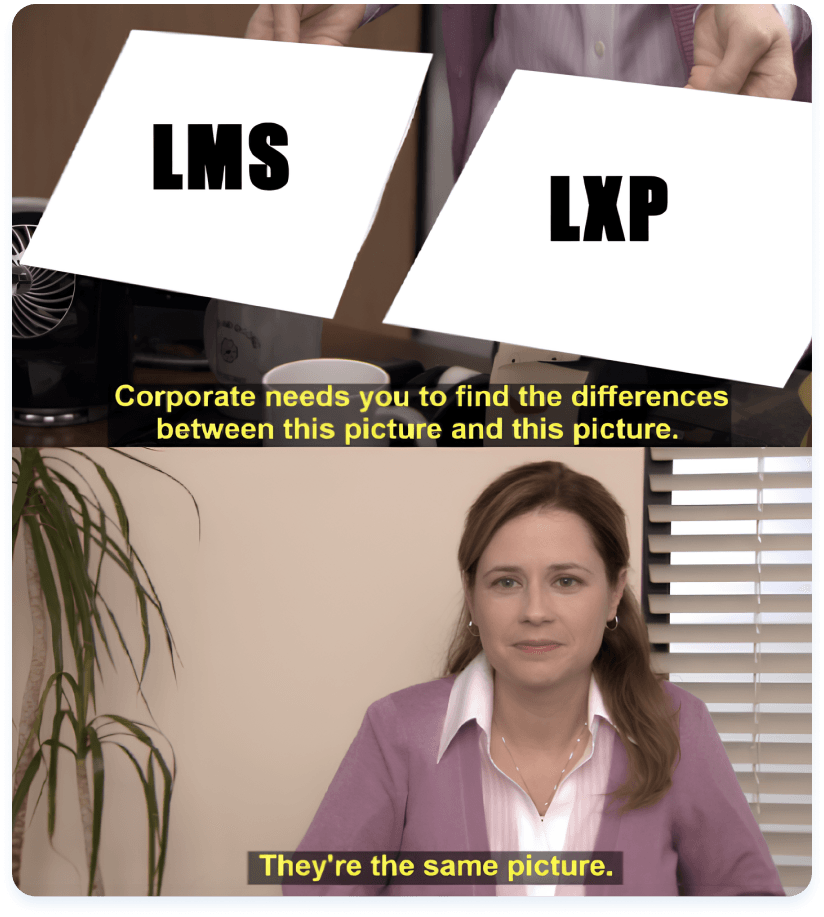
The main goal of LMS is administration of learning, whereas LXP’s focus is delivering personalized learning.
LMS concentrates on managing internal learning resources, monitoring learner use, and granting necessary access.
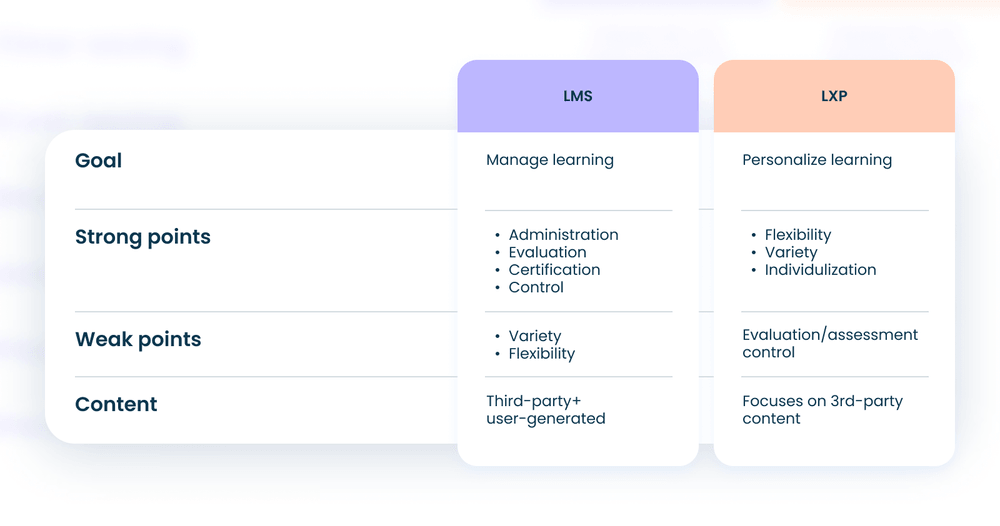
On the other hand, LXP gives users access to knowledge from many online sources, such as social media, blogs, videos, and other channels.
LinkedIn Learning is one example of this approach.
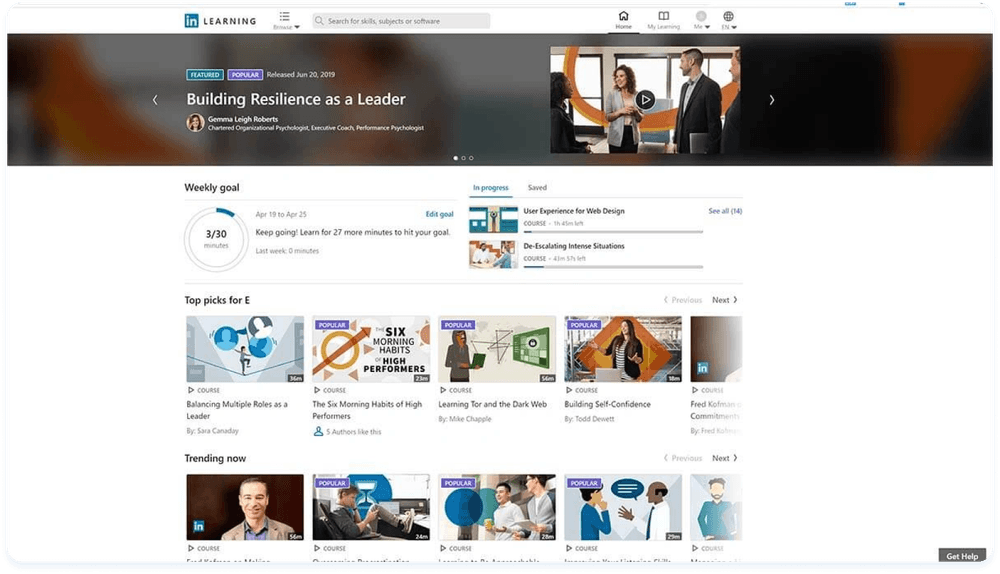
It has access to the LinkedIn profiles of its users and can recommend content depending on the listed skills, groups they subscribe to, job positions, and so on.
Both options are great ways to improve your eLearning or boost corporate training.
The choice depends on your eLearning expectations and L&D goals.
Benefits of LMS
Why use LMS at all? Let’s talk about benefits.
The scientific research shows the use of learning management systems helps students maintain their independence, excitement, and motivation.
That’s true! The choice of LMS for corporate training and education has a number of perks:
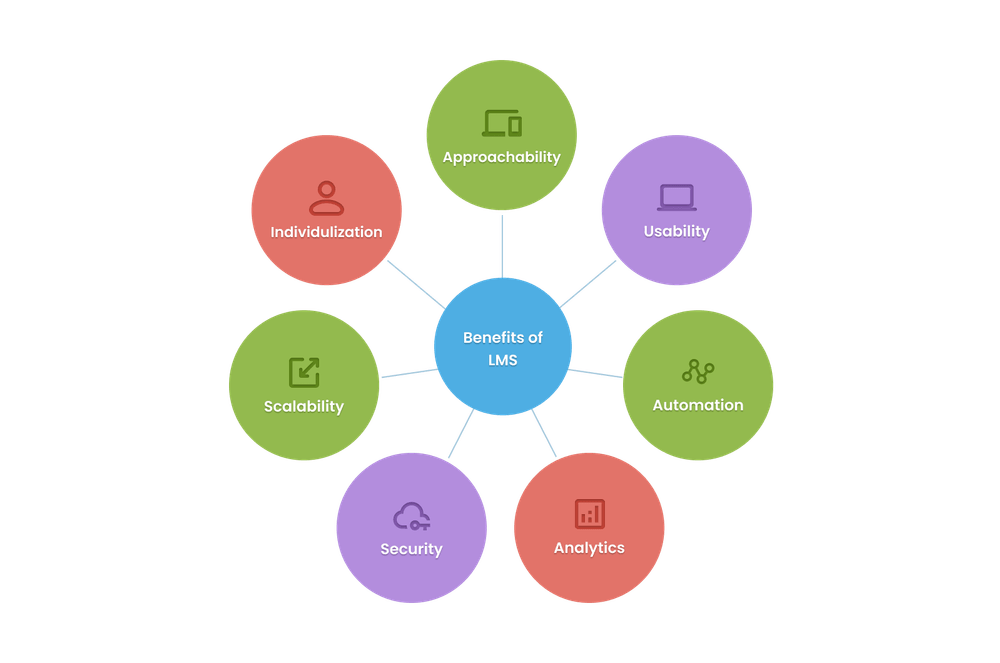
- Approachability. The platform ensures high-quality distance learning, which allows users to study anywhere and anytime, using any device and operating system.
- Usability. LMS is very user-friendly. Its interface and navigation are clear for students and teachers with different user experiences.
Overall, LMS enhances the learning experience by providing a centralized platform for communication and resource sharing. It offers a variety of features, such as online quizzes, discussion boards, and grade tracking. - Automation. The automatic control of all the processes reduces the risk of errors and accelerates the problem-solving procedure.
Additionally, LMS allows for easy access to course materials and assignments, promoting efficiency for both students and instructors. - Individualization. LMS can adapt to every customer. It can provide training tailored to the individual requirements of each learner, a certain business or an educational establishment.
- Security. LMS protects the personal data of all users and assures security for financial information and payments, ensuring a safe and reliable learning environment.
- Scalability. LMS is flexible and doesn’t limit users. Therefore, it is possible to develop eLearning and corporate training by implementing new technologies.
- Analytics. You can always have dashboards where you see the progress of learners.
At the same time, LMS can mark out those topics and sections where they need some individual coaching sessions.
The more tailored your LMS is, the more benefits you'll reap
Looking for a custom solution to meet your needs perfectly? Let’s talk.
LMS Users
Plenty of people experienced LMS benefits firsthand. Currently, the number of LMS users is estimated at 73.8 million.
Mainly, there are three types of LMS users: admins, instructors, and learners.
Admins
Admins are the users in charge of managing the LMS and training within their organization.
Their tasks include implementing and maintaining an LMS, managing user accounts, and protecting the confidentiality of data.
Instructors
Instructors create, develop, and deliver training materials. They design the course content, assist with instruction, evaluate students’ performance, and provide comments.
Learners
This one is pretty obvious. Learners are LMS end-users.
For example:
Employees – in corporate LMS,
Students – in LMS for higher education,
Pupils — in K-12 LMS.
They take courses, complete assignments, and receive grades or certifications.
LMS pricing
LMS pricing refers to the costs associated with using a learning management system to deliver and manage online learning materials.
They can vary greatly depending on the type of LMS (cloud-based or self-hosted, custom or ready-made), number of users, functionality, integrations, level of customer support, and other things offered by your vendor.
There are various LMS pricing models available on the market. Here are the most common ones:
Pay per active user
Pay-per-active-user pricing model allows for unlimited users to be added to an LMS, only charging for those who log in and stay active during the billing period.
It means clients pay only for learners who actually enroll in eLearning courses, which gives companies financial flexibility.
Subscription/license fee
Most LMS offer daily, weekly, monthly, and other subscriptions, which means providing access to the platform and related services for a chosen period of time.
There’s also a range of subscription plans (basic, premium, business), depending on features, tools or integrations you’ll use.
Pay-as-you-go
A pay-as-you-go model offers minimal costs during off-peak periods but increases them during hot seasons, which allows for flexibility and scalability, making them useful for businesses with changing demand.
At the same time, they may not be cost-effective for businesses with high and consistent usage needs, as they could end up paying more in the long run compared to fixed subscription models.
Learn more about LMS pricing models, their advantages and disadvantages, and choose the best one for your business.
Custom pricing model
This is a flexible pricing model, which allows companies to customize their LMS according to their requirements. Within the constraints of their budget, they’ll have all the features, modules, and add-ons they need.
All options have their pros and cons. Identifying your goals, requirements and budget constraints will help you make a choice.
Essential LMS features
To provide efficient training, LMS should have such features as:
- Content management;
- Course catalog;
- Convenient course builder;
- RTL support;
- User management;
- Skill-based recommendations;
- Certification management;
- Advanced reporting and analytics dashboards;
- Webinars module;
- Subscriptions management.
Custom LMS allows the construction of the optimum architecture, which is able to meet all main SCORM needs. It also enables even more functionality, including:
- Multi-user system administration;
- User chat;
- Maintenance for comments and recommendations from coaches;
- White labeling;
- Video materials streaming.
Such an approach to system building makes LMS compatible with a great number of custom education software, and leads to the creation of a new monetization source.
You can also have communication in real time, lesson structuring mechanisms, electronic commerce modules, easy effectiveness tracking, and an AI assistant.
AI technology can make online learning personalized. It analyzes learners’ behavior, tailors lessons to every student, provides 24/7 digital tutoring, and frees teachers’ time with automated grading.
Additionally, AI can provide real-time feedback to students, helping them track their progress and make adjustments as needed.
AI solutions for education
Drive digital transformation at your business with Aristek’s profound guidance and support.
Types of LMS
There are various types of LMS available:
SaaS, web-based, hosted, installed, mobile, open source, authoring, licensed, and others.
Let’s explore the most common categories:
Ready-made, custom and pre-built LMS
A ready-made solution is a concept that boils down to a ‘one-size-fits-all’ approach.
Vendors typically offer this tech solution to numerous clients as a finished product.
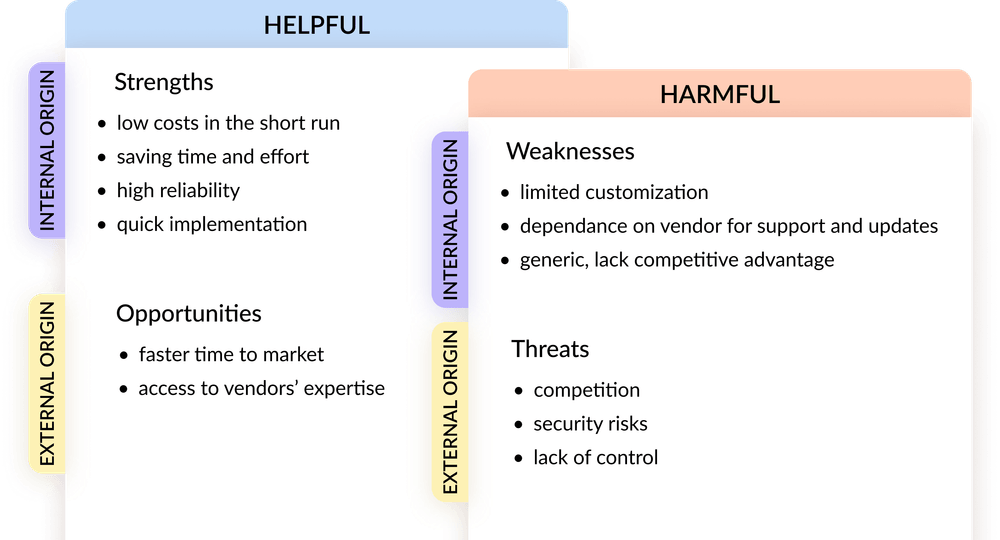
On the contrary, a custom LMS is made from scratch and tailored to specific e-learning requirements.
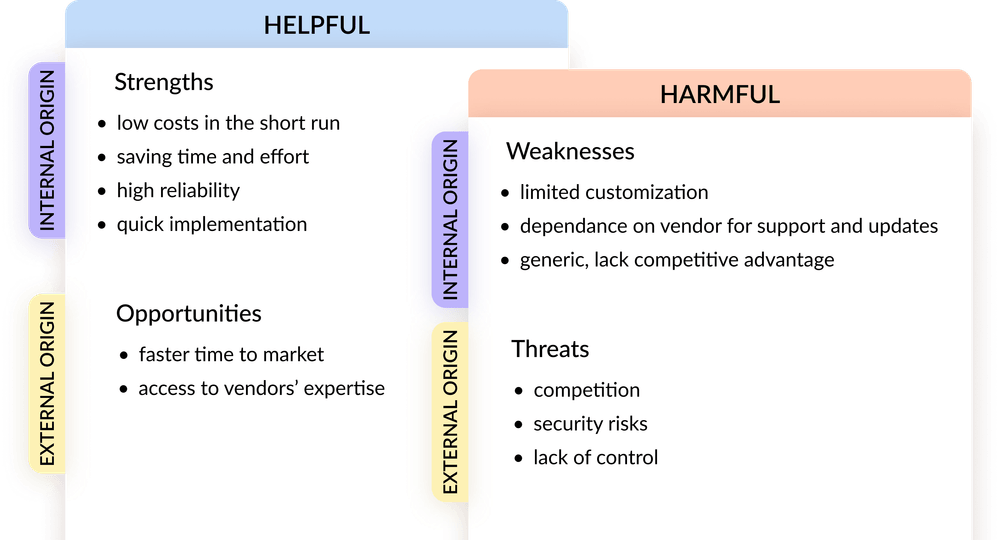
Custom and ready-made LMSs have plenty of benefits, but also some downsides.
At Aristek Systems, we’ve developed a solution that allows you to have it all without compromising — a pre-built LMS.
It includes all the essential features of a ready-made product but is highly customizable at the same time.
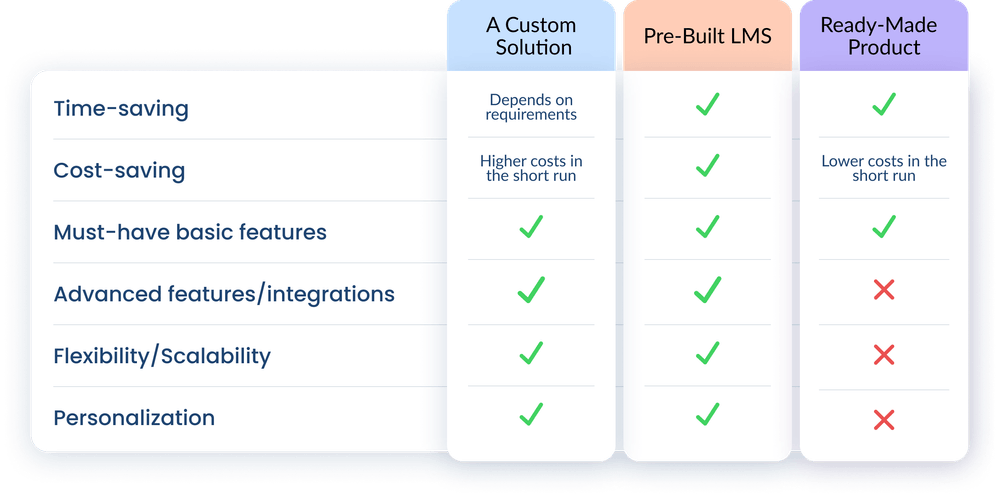
Cloud & on-premise LMS
On-premise LMS will keep your data on your own servers.
At the same time, cloud LMS will store all the data online, usually on the server of the LMS provider.
Academic & corporate LMS
To an extent, these LMSs are quite similar. In both cases, an LMS is a place where students can learn and collaborate online.
Yet, there are differences. Let’s dive deeper and compare!
Academic LMS
All LMS should be thought-through and well-designed.
Yet, there are some issues that are absolutely necessary for academic LMS, especially if we talk about K-12.
Nice & straightforward UI/UX
Without a straightforward user experience, it’s difficult for young learners to interact with the LMS.
Also, dull and outdated design won’t do any good for young users retention.
Accessibility in elearning
Another important issue is accessibility. Old-school platforms are built for the average student, but they don’t take into account people with disabilities and other minority groups.
Some students have just recently moved to the US, and they can have difficulties reading or speaking English.
Some have visual impairments or color blindness. Other students don’t have stable internet access.
If your LMS doesn’t consider minorities these students won’t have access to education.
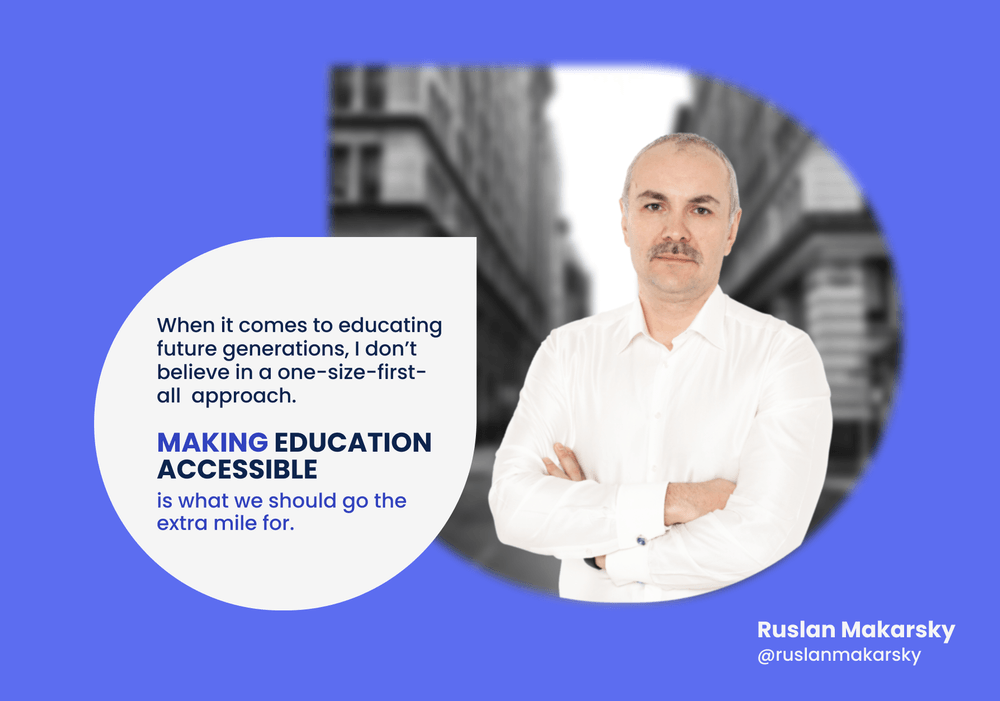
Parents mode
Some of the features can be different, for example, parents mode.
LMS for K-12 should grant parents access to their kids’ grade reports. In higher education and corporate training, this is typically not the case.
eLearning standards
These are helpful whether the LMS is built for K-12, higher education or corporate training.
But in the US and Canada, K-12 is a much more regulated field. For example, protocols like LTI or OneRoster are obligatory there.
Learn more about ways to ensure inclusivity, which mistakes avoid and how to build a great academic LMS.
Corporate LMS
Corporate LMS is designed to meet the training needs of organizations by providing a centralized platform for managing and tracking employee learning and development.
A great advantage of a corporate LMS is that it’s capable of satisfying all the needs of your workers.
For instance, orientation courses, vocational education, client support upskilling, familiarization with the qualities of the product or service, learning about regulatory compliance, and many more.
No wonder that the Chartered Institute of Personnel and Development found that 95% of hiring managers considered corporate training a key retention tool.
Find out how to boost corporate training with an enterprise LMS.
Part 2. Choosing an LMS
This part will help you choose the right solution. What’s more, you’ll learn to pick the best vendor.
LMS RFP
To choose the best match for your business goals, you’ll need a Request for Proposal (RFP). It is a document used by organizations looking for various solutions.
Thus, companies use an LMS RFP (Learning Management System Request for Proposal) to find the right LMS for their needs.
The LMS RFP serves as a formal invitation for potential vendors to submit their proposals.
It mentions all the necessary technical requirements, criteria, LMS features, and goals to be achieved.
Why use LMS RFP? Because it is a tool to:
- find the best value for money;
- save time and effort;
- manage risks effectively.
To craft an efficient LMS RFP, here’s a checklist for you. Learn more about each step here.
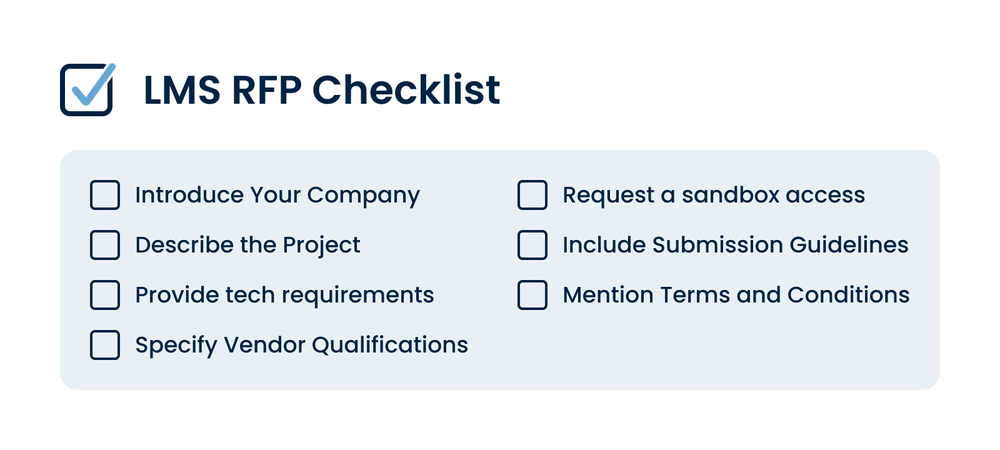
How to pick an eLearning vendor
After you’ve crafted an LMS RFP, you’ll deal with various vendors, offering their solutions.
Here are things to evaluate. You should take into account:
- Your business needs and goals;
- Your company’s budget;
- Vendor’s area of expertise;
- Reputation;
- Years of experience;
- Vendor’s portfolio;
- The solution’s flexibility and scalability.
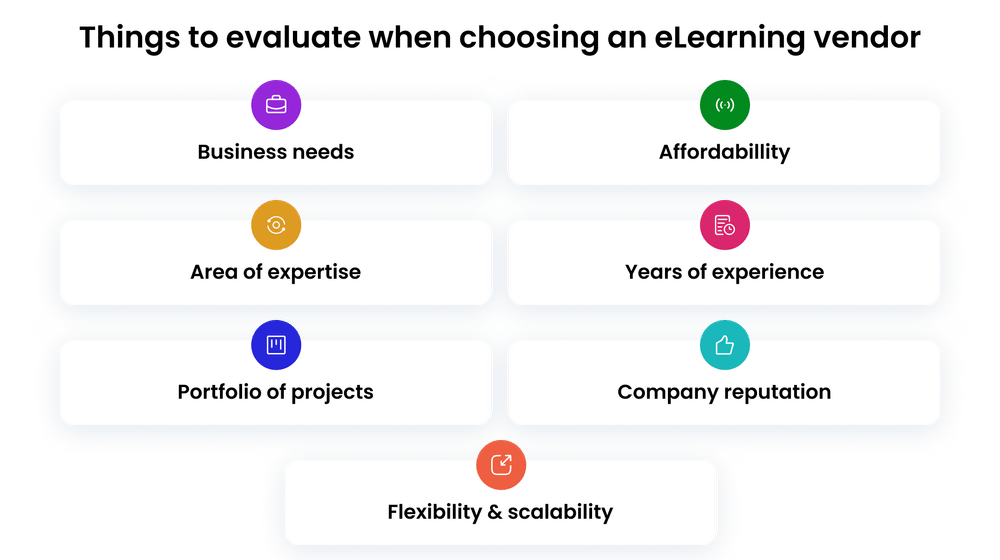
What’s more, you can speed up the process by reaching out to vendors yourself. We’ve prepared a listing that will come in handy.
Top 5 LMS development companies
Here are our 5 best picks:
1. Aristek Systems: LMS for content publishers
This is a perfect solution for content publishers. While major LMS are great for schools and universities, they do not integrate with each other very well.
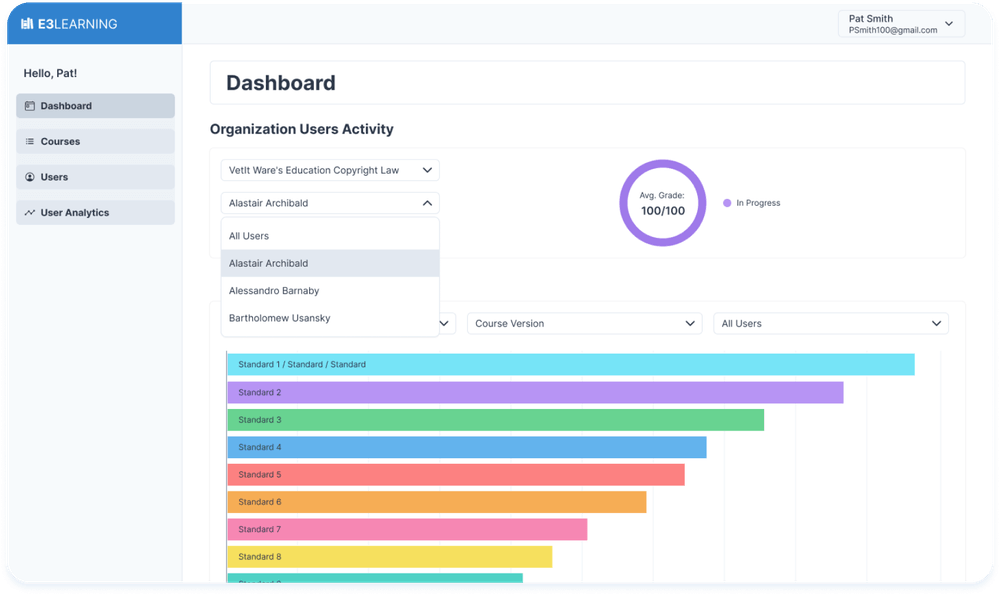
So if a content provider gets an LMS, they struggle selling content to customers with another software. With Aristek, publishers can sell curriculum to districts, regardless of their LMS.
2. Canvas
Canvas is the most popular K-12 LMS in the United States that’s also popular in higher education and corporate sectors.
Customers choose it for the integration options – some eLearning development companies can integrate hundreds of 3rd party tools with Canvas.
Another advantage is the intuitive design that helps educators create engaging content.
3. D2L Brightspace
Brightspace focuses on personalized learning. With adaptive learning technologies, students get to choose what they learn next, instead of being forced to learn materials.
Like some other LMS, Brightspace has great analytic tools that empower instructors to track student progress.
Brightspace developers promote interactive learning environments and collaboration between learners.
4. Moodle
Moodle is an open-source LMS. In part thanks to the free options, Moodle is popular globally. With thousands of plugins, Moodle is easily customizable.
It used to have the reputation of an old school LMS, but Moodle 4 is a modern and sleek platform. Although it’s open-sourced, there are many companies that will host your Moodle instance.
5. Cornerstone
Cornerstone has 7000 clients and 125 million users. Brands like Samsung and DHL rely on it, but many universities do too.
The LMS focuses on personalized development with custom learning paths. It also provides lots of data insights about employee learning productivity.
To explore more options, check out LMS development companies listing.
LMS implementation steps
Once you’ve chosen an eLearning platform, it’s time to implement it!
The LMS implementation process includes:
- Planning;
- Setup;
- Integration;
- LMS deployment.
Naturally, LMS implementation takes time. Yet, here are seven steps you should follow to make it faster and more efficient:
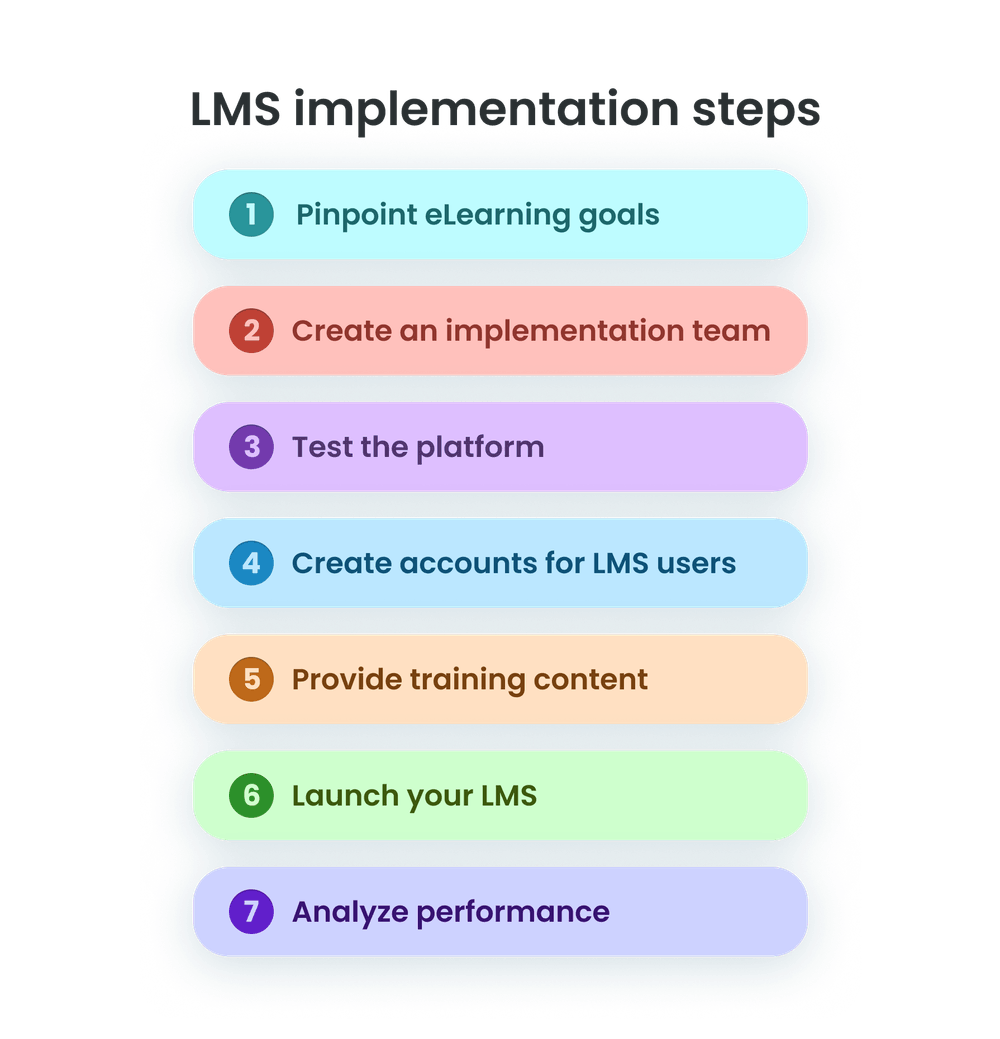
1. Pinpoint eLearning goals
Identify specific learning objectives that align with company goals. Consider the desired outcomes and performance improvements.
2. Create an implementation team
The team should consist of individuals with expertise in instructional design, technology, and subject matter. Establish clear roles and responsibilities to ensure a successful implementation process.
3. Test the platform
Ensure that LMS meets the technical requirements and UI needs of both learners and administrators. Conduct pilot testing with a small group of users to gather feedback and make any necessary adjustments.
4. Create accounts for LMS users
Provide training and support for users to ensure they are comfortable navigating the platform. Develop a plan for ongoing maintenance and updates to keep the LMS running efficiently.
5. Provide training content
Make sure that the content is engaging, interactive, and tailored to the needs of the learners. Regularly review and update to keep it relevant and effective.
6. Launch your LMS
Once you’ve made sure all adjustments are made and LMS works smoothly, it’s time for a launch.
7. Analyze performance
Monitor user engagement and feedback after the launch to measure the LMS effectiveness in meeting learning objectives and identify any areas for improvement.
Part 3. Making the most of LMS
Finally, we’ll talk about such common situations as LMS migration and LMS integration. Let’s see how to deal with them.
LMS integrations
Sometimes the software is great, but it misses just one important component. Turns out, you can improve your LMS.
Let’s talk about LMS integration.
What is an LMS integration?
Think of integrations as the bridges that link your LMS to external tools. Without them, your LMS is just a learning platform. It’s a place where teachers can create courses for learners to pass.
With integrations, you can add features from other apps into your LMS or simply move data around.
Imagine logging into your LMS directly from your Facebook account or editing a Google Doc right out of the LMS interface.
What are the perks of LMS integration?
- More features. That’s the most obvious one. If your LMS lacks a feature, just integrate another application to take care of it.
- Everything is in one place. Who wants to keep credentials to 5 different apps?
- Fewer boring tasks. No need to manually pass files around, better make the LMS do it for you.
- Better analytics. Computers extract and analyze more data than a person ever could. Especially, if you integrate with a powerful BI tool.
Technology-wise, there are 5 main ways to integrate LMS: with API, SSO, file transfers, webhooks, and middleware software. Find out how they work and what you can integrate with LMS.
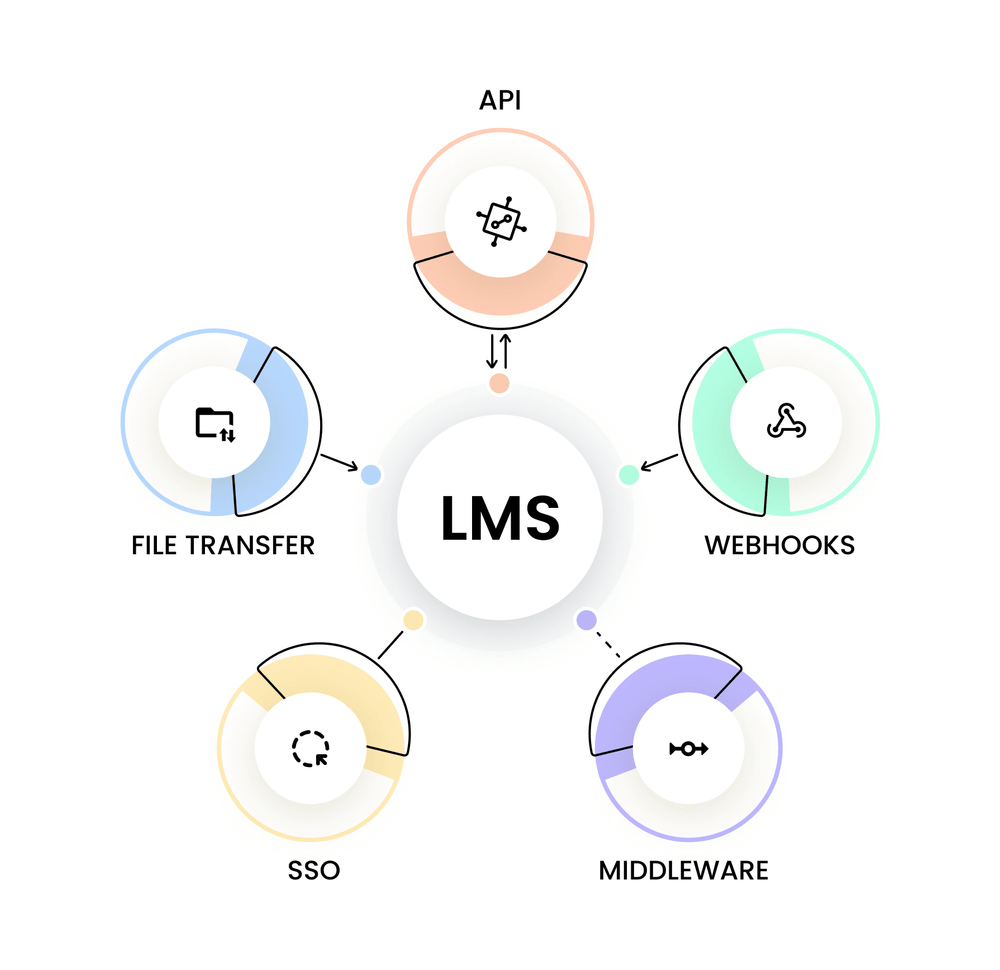
Real-life example. We built a tool that integrates educational software
It connects your K-12 LMS with all sorts of eLearning tools, from other LMS to SIS.
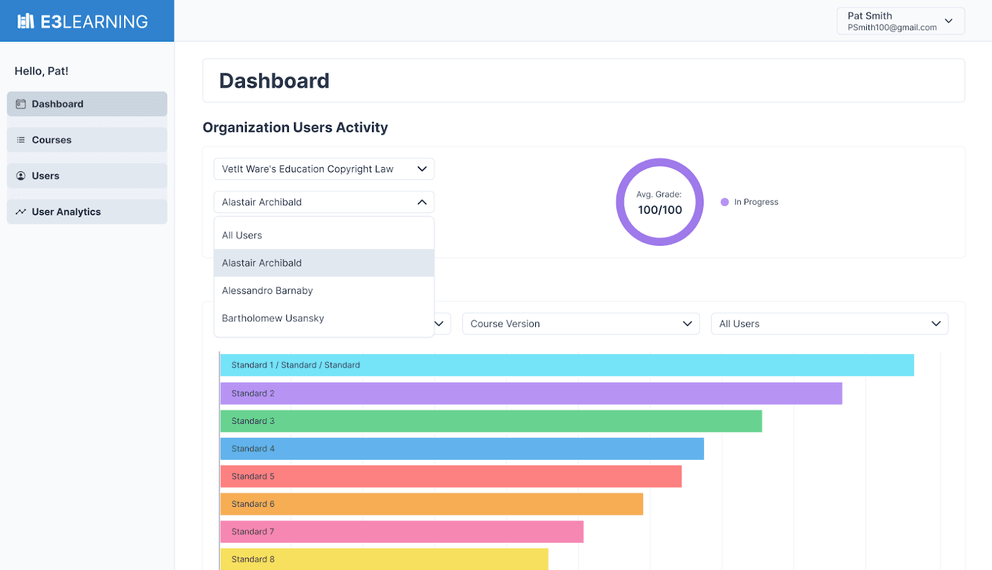
LMS Migration
Another case is when your old LMS platform doesn’t serve you right. You need a different LMS solution to fully meet your business needs.

This process is called LMS migration.
Why do it? There are many reasons for this. Here are five of the most common:
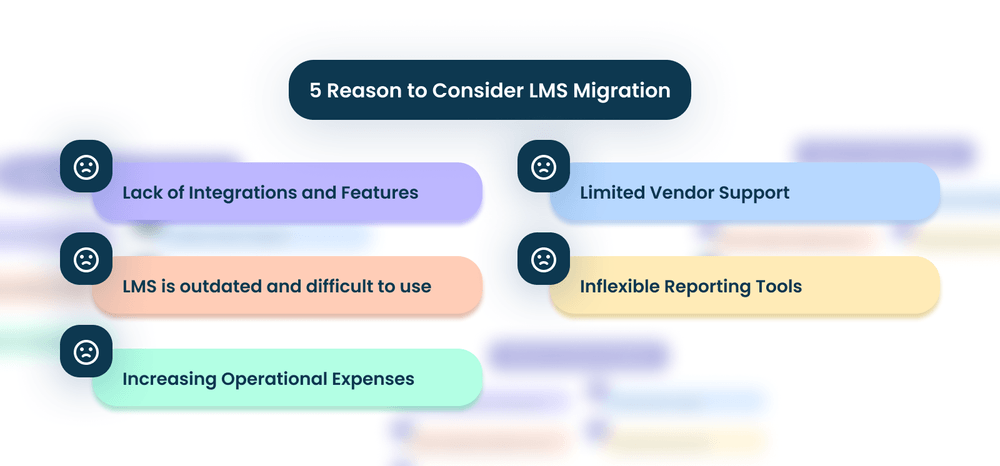
Lack of integrations & features
Your old LMS may lack valuable features that make eLearning effective. They include advanced reporting, custom learning paths, flexible content creation, course management, and others.
LMS is outdated & difficult to use
eLearning is becoming more efficient as innovative features emerge. If you think your LMS is outdated, you’re most likely right.
Besides a lack of innovation, your old LMS may have speed issues or a ‘user-unfriendly’ design, which results in a poor user experience.
Increasing operational expenses
Your old LMS seemed very cost-effective in the beginning, but it requires more and more resources to run. Companies sometimes underestimate the expense of upgrading and updating their LMS since it ages with time.
Limited vendor support
Go-live support is important, but it often doesn’t live up to initial expectations. It can become limited or require additional costs, depending on your vendor.
Inflexible reporting tools
You won’t know anything about learner progress or course performance if your LMS doesn’t offer thorough, interactive reports. Businesses should look for powerful analytics and reporting features in a new platform to gain useful insights.
In fact, when LMS can’t handle your specific requirements and bring you closer to learning goals, it’s time to reevaluate it.
With the right approach, LMS migration isn’t as difficult as it seems.
Also, your efforts will pay off, since a new LMS will address your current issues and provide additional benefits like enhanced performance, reduced costs, improved productivity and many others.
What to do next?
Every case, as well as every business, is unique.
If you want a solution tailored to your business needs, turn to a trusted vendor for custom LMS development.
If you already have an in-house team but it lacks relevant expertise, LMS development outstaffing will save the day.
Another situation is when you need to enhance your platform with cutting-edge AI tools. AI solutions for education will be a great choice.
We hope this guide will come in handy. What’s more, we’re always there for you. Contact us for a free consultation!




